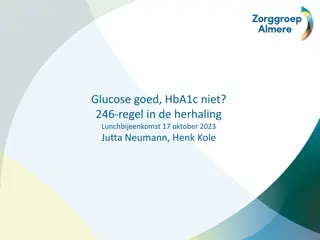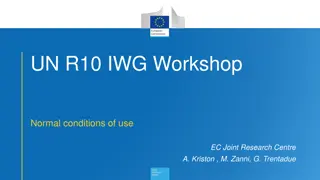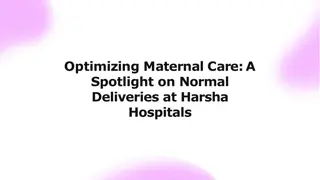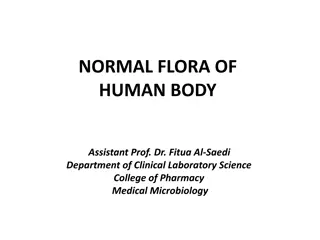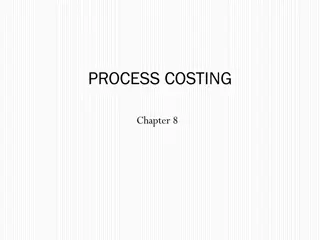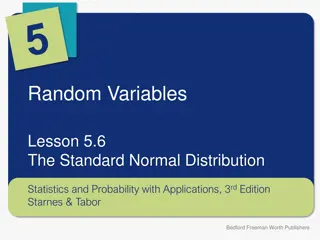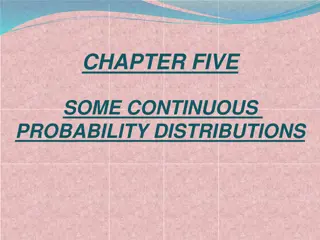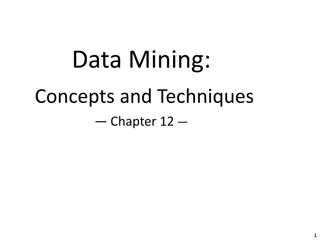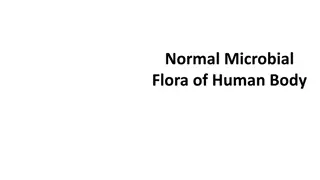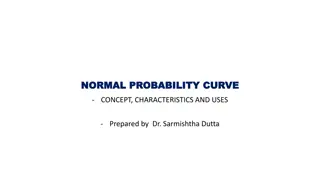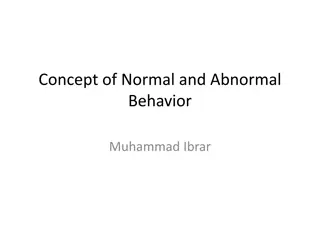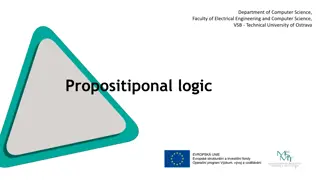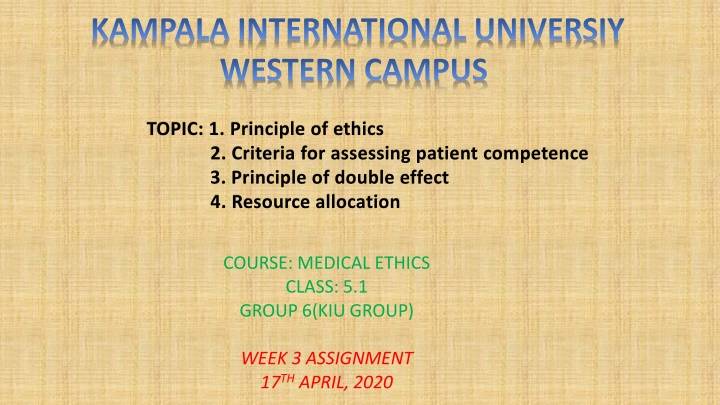
Principles of Ethics and Patient Competence Assessment in Medical Ethics Course
"Explore the principles of ethics, criteria for assessing patient competence, the principle of double effect, and resource allocation in a medical ethics course at Kampala International University Western Campus. Meet the lead author Andrew Tamale and the team of contributors responsible for teaching and presentation."
Uploaded on | 1 Views
Download Presentation

Please find below an Image/Link to download the presentation.
The content on the website is provided AS IS for your information and personal use only. It may not be sold, licensed, or shared on other websites without obtaining consent from the author. If you encounter any issues during the download, it is possible that the publisher has removed the file from their server.
You are allowed to download the files provided on this website for personal or commercial use, subject to the condition that they are used lawfully. All files are the property of their respective owners.
The content on the website is provided AS IS for your information and personal use only. It may not be sold, licensed, or shared on other websites without obtaining consent from the author.
E N D
Presentation Transcript
KAMPALA INTERNATIONAL UNIVERSIY WESTERN CAMPUS TOPIC: 1. Principle of ethics 2. Criteria for assessing patient competence 3. Principle of double effect 4. Resource allocation COURSE: MEDICAL ETHICS CLASS: 5.1 GROUP 6(KIU GROUP) WEEK 3 ASSIGNMENT 17THAPRIL, 2020
Details of the authors/contributors and their responsibilities CORSE MODULE MEDICAL ETHICS Lead author Andrew Tamale Responsible for: Coordinating the teaching, assessment, grading and presentation of the results Co-author OBBO DENIS BMS/6151/162/DU Responsible for: Group leader I: Coordinating the group and contributing to the presentation Co-author LOGIEL MARK BMS/5746/162/DU Responsible for: Group leader II: Coordinating the group and contributing to the presentation MUHAMMAD ABDULRAHMAN Co-author BMS/5770/162/DF Responsible for: Secretary: contributing to the presentation and compiling all the other contributors work. Co-author NYAKOOJO PAUL BMS/5041/161/DU Responsible for: Contributor: contributing to the presentation Co-author NALWEYISO CLAIRE BMS/5134/162/DU Responsible for: Contributor: contributing to the presentation LUISE NGHIUEUELEKWA Co-author BMS/5204/162/DF Responsible for: Contributor: contributing to the presentation Co-author MUNDURU PATIENCE ALIA BMS/5854/162/DU Responsible for: Contributor: contributing to the presentation NANYANZI IRENE Co-author BMS/5170/162/DF Responsible for: Contributor: contributing to the presentation
OKILLAN INNOCENT Co-author BMS/5530/162/DU Responsible for: Contributor: contributing to the presentation ABAJJA BETTY Co-author BMS/5751/162/DU Responsible for: Contributor: contributing to the presentation FADILA MOHAMMED Co-author BMS/0040/151/DF Responsible for: Contributor: contributing to the presentation BWAMBALE ANDERSEN Co-author BMS/6129/162/DU Responsible for: Contributor: contributing to the presentation OMITO ANDREW Co-author BMS/5745/162/DU Responsible for: Contributor: contributing to the presentation EMMANUEL KASAINE M Co-author BMS/5467/162/DF Responsible for: Contributor: contributing to the presentation ATUHAIRE MOSES Co-author BMS/5397/162/DU Responsible for: Contributor: contributing to the presentation KHADIJA ABDULLAHI Co-author BMS/5271/162/DF Responsible for: Contributor: contributing to the presentation ACHIRO WINNIE Co-author BMS/5195/162/DU Responsible for: Contributor: contributing to the presentation ONYUM BONNY Co-author BMS/5126/162/DU Responsible for: Contributor: contributing to the presentation
Co-author NAMUTAMBA DOREEN BMS/5061/161/DU Responsible for: Contributor: contributing to the presentation Co-author AISHA ABDIMAJID M BMS/5064/161/DF Responsible for: Contributor: contributing to the presentation Co-author TOKULA EMMANUEL BMS/5108/161/DF Responsible for: Contributor: contributing to the presentation Co-author MWESIGWA K ALLAN BMS/5073/161/DU Responsible for: Contributor: contributing to the presentation Co-author TOWONGO DIANA DAWA BMS/5462/162/DF Responsible for: Contributor: contributing to the presentation Co-author NALYAZI PRISCILLAR BMS/5224/162/DU
Case scenario AM is a 24-year-old salesman. He presents with a short history of dry cough and breathlessness. On examination he has generalized lymphadenopathy and oral thrush. His respiratory rate is increased, but there are no added sounds in the chest. The chest radiograph shows bilateral mid-zone opacification with a groundglass appearance highly suggestive of Pneumocystis carinii pneumonia. His general practitioner advises HIV testing, but AM declines, claiming he will lose his job if he is found to be HIV-infected. He also refuses to share the diagnosis of pneumocystis or the possibility of HIV infection with his wife. The ethical principle abrogated/upheld in the above scenario recognized by the group members is Principle of Confidentiality
Confidentiality Confidentiality The provision of medical care always involves an invasion of privacy by gaining access to the patient s body and to a wide range of personal information about the patient. This is necessary in order to make an adequate diagnosis and to prescribe appropriate treatment. This privileged access, however, is justified only because it brings the patient benefits. It is only obtained with the patients consent (except in emergency situations).
Case : A woman enters the emergency room with stomach pain. She undergoes a CT scan and is diagnosed with an abdominal aortic aneurysm, a weakening in the wall of the aorta which causes it to stretch and bulge (this is very similar to what led to John Ritter's death). The physicians inform her that the only way to fix the problem is surgically, and that the chances of survival are about 50/50. They also inform her that time is of the essence, and that should the aneurysm burst, she would be dead in a few short minutes. The woman is an erotic dancer; she worries that the surgery will leave a scar that will negatively affect her work; therefore, she refuses any surgical treatment. Even after much pressuring from the physicians, she adamantly refuses surgery. Feeling that the woman is not in her correct state of mind and knowing that time is of the essence, the surgeons decide to perform the procedure without consent. They anesthetize her and surgically repair the aneurysm. She survives, and sues the hospital for millions of dollars. The ethical principle upheld in the above case identified by the group members includes; 1. Autonomy 2. Informed consent
Autonomy Autonomy essentially means "self rule," and it is a patient's most basic right. As such, it is a health care worker's responsibility to respect the autonomy of her patients. However, at times this can be difficult because it can conflict with the paternalistic attitude of many health care professionals. The following two cases address patient autonomy. The case above involves the rights of an individual to decide her own fate, even against her physicians' judgments.
CONT.. The right to make decision about one s own life and body without coercion by others. Insofar as is possible in a democracy, and to the extent that their decisions do not harm others, individuals should be allowed (left alone) to make fundamental medical decisions (given the necessary information) that affect their own bodies allowed to make their own decisions about who to marry, whether to have children, how many children to have, what kind of career to pursue, and what kind of life they want to live. Since the beginnings of modern medical ethics in the early 1960s autonomy has meant the patient s rights to make her own decision about her body, including dying and reproduction. The ethics of autonomy evolved as a rejection of paternalistic ethics which had their roots in both secular and religions versions of virtue ethics.
Case history This case history was presented at the International Conference on Social sciences and AIDS in Africa , in Sali Portudal (Soyinka 1996). A 27 year old female patient, with an history of frequent miscarriages was secretly tested for HIV, and was found to be HIV sero-positive.The husband of the patient was employed in a University Teaching Hospital, where the test was carried out. The policy makers in the Teaching Hospital knew about the test result. A few months after the test was carried out, the spouse of the lady took ill, with some renal problem needing renal dialysis. However as it is generally done in this hospital (as in other hospitals in Uganda as well), all patients needing renal dialysis are screened for HIV (without consent and without counseling). The reason for this action is that the hospital possesses only one renal dialysis machine, which will not be used for HIV positive patients. Consequently the man who is a surgeon was clandestinely screened for HIV and he too was positive. He was not put on renal dialysis machine, and he was not informed why. The surgeon asked questions to which various flimsy excuses were given. The following are the ethics principles which have been abrogated; 1. Truth telling and withholding information 2. Informed consent 3. Justice and equality 4. maleficence
Truth Truth telling and withholding information telling and withholding information Comment; When physicians communicate with patients, being honest is an important way to foster trust and show respect for the patients. Patients place a great deal of trust in their physicians and may feel that trust is misplaced if they discover or perceive lack of honesty and conduct by the physician. Yet there are situations in which the truth can be disclosed in too brutal a fashion or may have a terrible impact on the occasional patient.
Justice/honesty Justice/honesty Has both a social and political interpretation socially, justice means treating similar kinds of people similarly. A just practitioner treats all the patients in the same way regardless of their circumstances such as financial capability e.t.c Politically it amounts to distributive justice, which in medicine may refer to allocation of the scarce medical resources. Also equal access to medical care for every citizen. In the usual sense, justice requires practitioners to treat patients impartially, without bias on account of gender, race, sexuality or wealth.
CONT We must practice health care in the light of the patients needs without being influenced or prejudiced by factors that have nothing to do with their illness. Thus, we must act with justice and impartiality; ensuring that our care is given in a spirit of compassion and a desire to benefit the patients rather than being distorted by any other motive or interest.
Beneficence Beneficence doing good to others . doing good to others . This is similar to the religious virtue of compassion and helping others. This comes to the fore in efforts to distinguish therapeutic from non-therapeutic research on human participants. Beneficence can be seen both as a principle and a virtue for physicians. Self-sacrifice is part of medicine. Beneficence may sometime come into conflict with autonomy e.g. whether or not to treat a psychiatric patient against his/her will. Balancing the two in such cases may be difficult.
CONT` Our practice must be in accord with techne (Skilled form of knowledge) or art whose aim is to confer substantial benefit on suffering human beings. This techne is governed by an ethic that is committed to restoring and repairing, as far as possible, the form and function of a human being. Any health care provider should be able, with sincerity and integrity, to assure patients that the care they will receive is at least as good as that defined by the accepted standards of contemporary medical practice.
CONT` We must always treat patients as people, involving them in those significant decisions about their care that will affect their lives and well-being. Thus, our conception of substantial benefit is and should remain patient oriented.
Non Non- -malfeasance malfeasance not harming others . not harming others . This implies that if a practitioner is not technically competent to do something, he/she should not do it. Taken further, medical students should not harm patients by practicing on them (unless the patients consent). This principle prohibits corruption, incompetence and dangerous, non-therapeutic research. Harm can also be done by unsolicited intrusions (help, advice or even concern). We must safeguard the continuity and standards of medicine and other health care professions, taking care to ensure that what is done and taught is consistent with an ongoing enterprise in service of the people.
INFORMED CONSENT INFORMED CONSENT The concept of informed consent implies that consent is ineffective unless the doctor has fully disclosed, the risks involved in giving a particular treatment and alternative management modalities and how their effectiveness and risks compare to the one being proposed, before consent is given by the patient. Consequently, the doctrine of informedconsent is meant to enable the patient and not the doctor to be the one who makes the final decision.
CONT` consent The The general general duty Before undertaking any medical or surgical procedure, a doctor must obtain the patient s consent. The doctor, who fails or ignores to obtain consent, exposes himself/herself to claims of medical malpractice or violation of the patient s civil rights. The doctor s duty to obtain consent arises from the patient s right to self- determination. Every adult human being, who is sound in mind, has a right to determine what shall be done with or to his/her own body. Thus, a doctor who administers management modality without the patient s consent would be deemed to have committed an assault for which he/she is liable in damages In medical emergencies, however, consent is generally implied. Thus, a doctor is deemed legally authorized to treat a patient in an emergency situation without having received the patient s explicit consent. duty to to obtain obtain consent
Principle of double effect DEFINITION The Doctrine of Double Effect emanates from the fact that some actions seem to have both a good and a bad effect. It has also been described as the principle (to dissociate it from a religious origin) or the rule of double effect. The Doctrine of Double Effect aims to describe the best practice when a clinician must distinguish the positive benefits of an intervention against the known foreseeable but unintended risks and burdens of such therapy.
CONT` It has figured extensively not only in discussions of end-of-life decisions that seem to have a good effect (ie, comfort) but also in the likelihood or possibility of a bad effect (ie, shortening life). The principle states that the risk of a negative known (foreseen), unintended consequence, or adverse effect of treatment can be justified if it was not the original and main intent of the action.
The doctrine consists of four conditions that must be satisfied before an act is morally The doctrine consists of four conditions that must be satisfied before an act is morally permissible: permissible: 1. The nature-of-the-act condition. The action, apart from the foreseen evil, must be either morally good or indifferent. 2. The means-end condition. The bad effect must not be the means by which one achieves the good effect. Good ends do not justify evil means. 3. The right-intention condition. The intention must be the achieving of only the good effect, with the bad effect being only an unintended side effect. All reasonable measures to avoid or mitigate the bad effect must be taken. 4. The proportionality condition. There must be a proportionately grave reason for permitting the evil effect.
Case scenario on Principle of double effect Ms SK was a 77-year-old woman followed by oncology for her widely metastatic lung cancer. Her disease was refractory to treatment and progressed; she grew weaker. She chose comfort-focused care and refused further cytotoxic therapy. Extensive osseous involvement began to cause her excruciating bone pain at multiple sites, and the pain progressed despite several courses of palliative radiation therapy, bisphosphonates, and increasing doses of opioids and coanalgesic medications. She was dyspneic and anxious, with both symptoms aggravated by her severe pain. She was admitted to a local hospital for general decline, dehydration, and severe pain. Increasing doses of intermittent intravenous morphine were administered with suboptimal effect, and 2 days after admission, a continuous morphine infusion with prn clinician-administered boluses was ordered. After aggressive dose titration, at last, the patient seemed to achieve an acceptable level of comfort and calm. She remained intermittently awake and interacted with family at her bedside, but some of the staff were uncomfortable administering increasingly high doses of opioid, fearing that they would hasten the patient s death and a few days later the clinician decided to uphold the high doses of morphine. Following this decision, Ms. SK started experiencing severe pain, dyspnea and general decline.
CONT` In this scenario, the principle of double effect has been upheld by the clinician withdrawing the high doses of morphine from the patient.
Are these clinicians ethically justified in giving very high doses of opioids for pain at the end of life? If one applies Mangan"s 4 conditions of the DDE, the principle applies in the following manner: 1. The action of administering opioids to relieve suffering is, in itself, good. 2. The intent of administering opioids is for the good effect of pain relief, not the bad effect/intention of hastening her death. 3. The pain relief (good effect) is not achieved by shortening her life (bad effect). 4. The good effect of adequate pain relief and alleviation of suffering outweighs the possibility of shortened life.
CONT` One can now consider this case with a different outcome The described 77-year-old woman was admitted to the inpatient unit with severe excruciating pain that did not respond to increasing doses of intravenous opioids. The patient and family pleaded with the clinician to end her suffering, and a dose of a lethal drug was ordered for her to take on her own (as would be ordered in the case of physician-assisted death) or administered to end her life so she no longer suffered (as in the case of euthanasia). Examination of this scenario within the DDE framework reveals violation of numbers 1 and 3 of the conditions of DDE: 1. The action of ending life is, in itself, a bad effect. Although some may argue that death in this scenario is not evil but a release from pain, the third condition is still applicable and is violated: 3. The pain relief (good effect) was achieved by the bad effect (ending the patient s life). Hence, because the DDE forbids the achievement of good ends by wrong means, it is generally accepted that the DDE does not provide moral justification for euthanasia or physician-assisted death, as described in this case. Presented here is another case involving sedation at the end of life:
CONT` Competency is a global assessment and legal determination made by a judge in court. Capacity is a functional assessment and a clinical determination about a specific decision that can be made by any clinician familiar with a patient s case. Hospitalists frequently encounter situations in which a patient s capacity is called into question; in most cases, this is a determination a hospitalist can make independent of consultants. The four key components to address in a capacity evaluation include: 1) communicating a choice, 2) understanding, 3) appreciation, and 4) rationalization/reasoning.
CONT` To make this determination, a hospitalist needs to know how to assess capacity. Although capacity usually is defined by state law and varies by jurisdiction, clinicians generally can assume it includes one or more of the four key components: 1. Communication. The patient needs to be able to express a treatment choice, and this decision needs to be stable enough for the treatment to be implemented. Changing one s decision in itself would not bring a patient s capacity into question, so long as the patient was able to explain the rationale behind the switch. Frequent changes back and forth in the decision-making, however, could be indicative of an underlying psychiatric disorder or extreme indecision, which could bring capacity into question. 2. Understanding. The patient needs to recall conversations about treatment, to make the link between causal relationships, and to process probabilities for outcomes. Problems with memory, attention span, and intelligence can affect one s understanding.
CONT` 3. Appreciation. The patient should be able to identify the illness, treatment options, and likely outcomes as things that will affect him or her directly. A lack of appreciation usually stems from a denial based on intelligence (lack of a capability to understand) or emotion, or a delusion that the patient is not affected by this situation the same way and will have a different outcome. 4. Rationalization or reasoning. The patient needs to be able to weigh the risks and benefits of the treatment options presented to come to a conclusion in keeping with their goals and best interests, as defined by their personal set of values. This often is affected in psychosis, depression, anxiety, phobias, delirium, and dementia.
Case A 79-year-old male with coronary artery disease, hypertension, non- insulin-dependent mellitus, moderate dementia, and chronic renal insufficiency is admitted after a fall evaluation. He is widowed and lives in an assisted living facility. He s accompanied by his niece, is alert, and oriented to person. He thinks he is in a clinic and is unable to state the year, but the remainder of the examination is unremarkable. His labs are notable for potassium of 6.3 mmol/L, BUN of 78 mg/dL, and Cr of 3.7 mg/dL. The niece reports that the patient is not fond of medical care, thus the most recent labs are from two years ago (and indicate a BUN of 39 and Cr of 2.8, with an upward trend over the past decade). You discuss possible long-term need for dialysis with the patient and niece, and the patient clearly states "no." However, he also states that it is 1988. How do you determine if he has the capacity to make decisions?
Comment; Hospitalists are familiar with the doctrine of informed consent describing a disease, treatment options, associated risks and benefits, potential for complications, and alternatives, including no treatment. Not only must the patient be informed, and the decision free from any coercion, but the patient also must have capacity to make the decision. Hospitalists often care for patients in whom decision-making capacity comes into question. This includes populations with depression, psychosis, dementia, stroke, developmental delay, comatose patients, as well as those with impaired attentional capacity (e.g. acute pain) or general debility (e.g. metastatic cancer). severe personality disorders,
CONT` ave for the comatose patient, whether the patient has capacity might not be obvious. However, addressing the components of capacity (communication, understanding, appreciation, and rationalization) by using a validated clinical tool, such as the MacCAT-T, or more simply by systematically applying those four components to the clinical scenario under consideration, determination. hospitalists can make this
Resource allocation and justice Health care resources are defined as all materials, facilities, personnel, funds and anything else that can be used to provide healthcare services Societies are facing medical resource scarcities, inter alia due to increased life expectancy and limited health budgets and also due to temporal or continuous physical shortages of resources like donor organs. This makes it challenging to meet the medical needs of all. Ethicists provide normative guidance for how to fairly allocate scarce medical resources, but legitimate decisions require additionally information regarding what the general public considers to be fair. The Universal Declaration of Human Rights adjudges everyone the right to the enjoyment of the highest attainable standard of physical and mental health . This provision includes access to all the medical resources needed to live up to that standard.
Cases where resources are adequate Adequate resources means health care resources in a given setting are cost effective and equitably distributed to meet the health care needs of everyone. Resource allocation in health care should satisfy two main ethical criteria 1. Cost effective : limited resources for health should be allocated to maximize the health benefits for the population served. 2. Equitable or just: equity is concern with the distribution of resources or benefits and costs to distinct individuals or group.
Allocation of scarce medical resources societies are facing situations where medical resources are scarce, and access to means of prevention, diagnosis, and treatment of those in need is not always guaranteed. Insufficient supply of medical resources is obvious in many developing countries where basic services are widely lacking. similarly well-off countries are confronted by scarcities of medical resources such as donor organs, hospital beds during epidemics or after severe disasters, or unusually expensive drugs like Sofosbuvir to cure HCV infection or Myozyme to manage Pompe disease
Example 1: Prioritizing individuals during the 1918 influenza pandemic and 2018/2019 Congo Ebola vaccination program The Regulation on the Control of Communicable Diseases of Humans sets the rules for prioritizing individuals in situations when vaccines effective against pandemic influenza/Ebola (as well as other critical drugs to treat communicable diseases) might be scarce. Any prioritization based on this regulation has to reflect generally accepted medical and ethical criteria as well as economic and societal concerns. The following groups are explicitly mentioned as eligible for prioritization: 1. health care workers; 2. individuals, who have a higher risk of complications and adverse outcomes of the disease than others; 3. individuals, who contribute to crucial services such as inner and national security, transport, communication as well as energy, water, and food supply. Accordingly, individuals can be prioritized according to their instrumental value and according to their individual prognosis.
Example 2: Allocating donor organs The Regulation on the Allocation of Organs for Transplantation governs the allocation of the following organs: heart, lung, liver, kidney, pancreas, small intestine. Allocation rules are based on multiple criteria and differ (slightly) for different organs. In summary, 1. medical urgency: first priority is given to patients whose life would be at immediate risk if they would not receive the organ; 2. medical benefit: second priority is given to patients, for whom the greatest medical benefit is expected. If two (or more) patients should have the same priority according to these criteria, the following criteria shall also be taken into consideration: medical urgency, waiting time, extended waiting time due to the patient s blood group, fit of the tissue characteristics.
Cases where resources are lacking Mr. AQ is a 19 year old Boda-boda rider from Katogo village in Mubende has been involved in road traffic accident presented to MRRH A&E with acute blood loss. On examination, the doctor on call finds out that the patient has signs of hemodynamic instability and requires immediate blood transfusion. After grouping and cross matching it was found out that he was blood group B+. However, there was no blood at all in the hospital blood bank. Unfortunately he succumbed as the hospital staff prepared to transfer him to Mulago National Referral for blood transfusion. Comment; From the scenario above, the shortfall recognized by the group members is lack of blood to transfuse Mr. AQ. This shortfall can be solve through distributive justice by MoH in which blood transfusion services are allocated to the those in the greatest need irrespective of who is paying for them, encourage the community to donate blood frequently and blood donation firms to ensure free and equitable distribution of blood.
REFERENCE Krutli P, Rosemann T, Tornblom KY, etal, (2016) how to faily allocate scarce medical resources: Ethical Argumentation under scrutiny by health professionals and lay people , PLoS ONE 11 (7): e0159086.0 doi:10.1371/journal.pone0159086. Healthcare Encyclopedia, Healthcare resources, Allocation of Justice. National Centre for Biotechnology Information, Health resources. Punjani NS (2013) Truth Telling to Terminally Ill Patients: To Tell or not to Tell. J Clin Res Bioeth 4: 159. doi:10.4172/2155-9627.1000159 Neelam Saleem Punjani, Sahreen Malik Bhanji, Shaista Taufiq Mehgani & Muslim Shah The Aga Khan University School of Nursing and Midwifery. Karachi, Pakistan.Health care Ethics- Am I dying. Four fundamental ethical principles by Theodore Gracyk, Minnesota State University Moorhead Ethics and Morality, Joshua Albert, dec 2016



